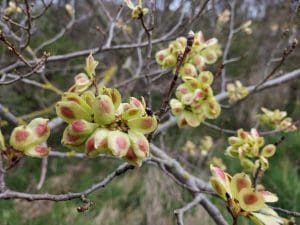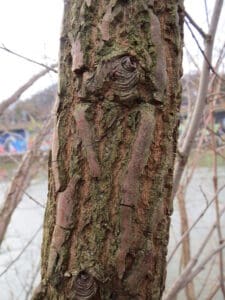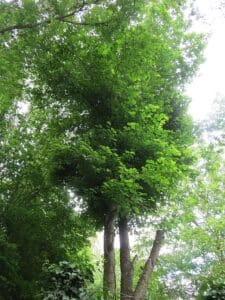Elm / Spring / Summer / Autumn / Winter / Edible
There are many species of Elm such as the English Elm (Ulmus procera), Wych Elm (Ulmus glabra) and Field Elm (Ulmus minor). All were sadly affected by the fungal Dutch elm disease which came to the UK in the 1960’s and devastated populations of these majestic trees. Some species will grow to almost 40m and often with a forked trunk and very rough, fissured bark.
Common Names
English Elm, Wych Elm, Field Elm
Botanical Name
Ulmas sp.
Scientific Classification
Kingdom: Plantae
Order: Rosales
Family: Ulmaceae
Physical Characteristics of Elm
Leaves
The leaves are often rounded and oval, hairy and have a toothed margin. Many elms have a distinguishing feature on the leaves whereby at the base it is asymmetrical.
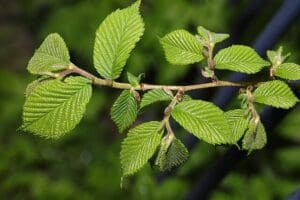
Flowers
The flowers will appear in the late winter/early spring between February and March. Being hermaphrodites the flowers contain both male and female reproductive parts. Hanging down like tassels, the flowers are a deep red/pink. The flowers are pollinated by the wind.
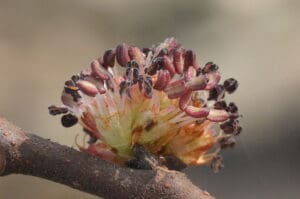
Fruit
After flowering the fruits will appear and are known as samaras. They are flat, papery and winged with the seed nestled in the centre.
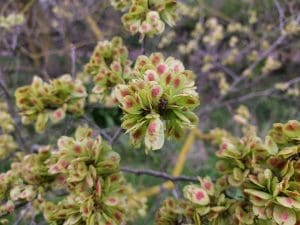
Habitat
Elm loves growing in woodlands, hedgerows and field edges.
Known Hazards
There are no specific known hazards for this species
Could be Confused with
You could confuse Elms with other species but all are edible. The leaves can look similar to that of Hazel (Corylus avellana) but look for the multi-stemmed, smooth silvery bark of Hazel that will also produce hazel nuts in the late summer/early autumn and won’t grow as tall.
Edible Uses
We can use the leaves, fruit and bark for food.
In times of famine it is known that the bark was used to make a floury meal and bread.
When the leaves are young and tender they can be a nice addition to a salad although they are quite bitter. You could also wilt them down as a green and add them to soups, stews and stir-fries.
The fruit or the Samara’s are probably the tastiest part of the Elm tree. You’ll find them in a spring and the taste has been described as a sweet pea. They are lovely to nibble fresh and added to salads or as a garnish. You can also treat them like a veggie and add to other recipes. There is a seed inside each samara and you can process these and use them like a sunflower or pumpkin seed so would be great toasted.
Notes on Herbal Uses
Elm is astringent so has been used in herbal medicine for thousands of years. It is known to be a wonderful healing herb for wounds.
Extra notes from the Foragers
The wood from Elm is amazingly strong and durable whilst being water resistant. Elm has commonly been used for various wood-working from ship building to furniture making.



